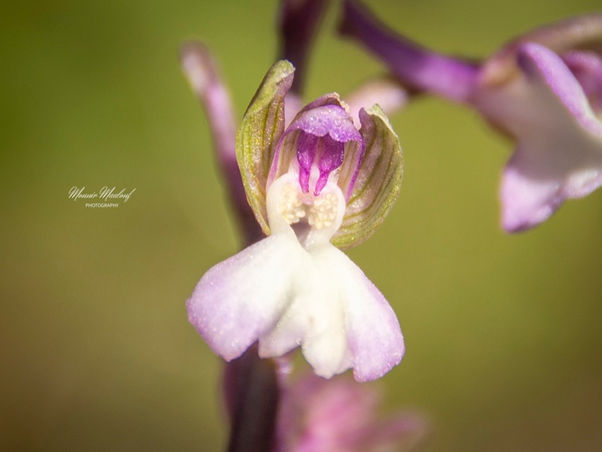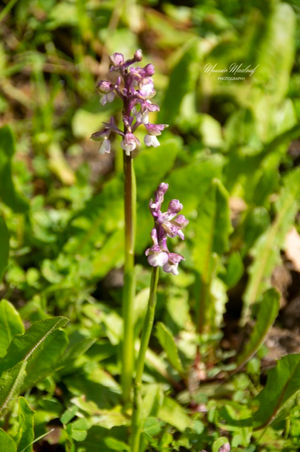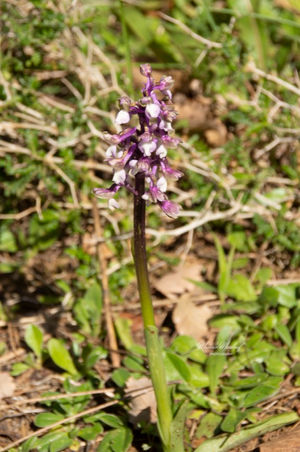Family |
Orchidaceae
Anacamptis morio subsp. syriaca
(E.G.Camus) H.Kretzschmar, Eccarius & H.Dietr.

Anacamptis morio subsp. syriaca (E.G.Camus) H.Kretzschmar, Eccarius & H.Dietr.
(Camus, Monogr. Orchid. : 106; 1908 – re-combined in Orchid Gen. Anacamptis Orchis Neotinea, 2nd ed., p. 142; 2007) - worldfloraonline.org - Plants of the World Online
Life-form & habit : Tuberous perennial geophyte, usually 12 – 30 cm tall (rarely to 40 cm); single, unbranched green scape arises from a pair of ovoid tubers. Plants emit no unpleasant odour, unlike the closely related A. coriophora group.
Leaves : 4 – 7 unspotted, narrowly lanceolate leaves forming a loose basal rosette; largest blades 6 – 10 cm × 0.5 – 1.5 cm; 1 – 2 smaller sheathing leaves clasp the lower stem.
Inflorescence : Dense, ovoid-to-cylindrical spike 4 – 8 cm long bearing 15 – 40 flowers; green lanceolate bracts reach or slightly exceed the ovary; pedicels sub-equal, 5 – 10 mm.
Flowers :
Helmet (sepals + petals) pink-lilac to pale rose, veins green.
Labellum (lip) three-lobed, 6 – 8 mm, always immaculate (spot-free) in the central field — a constant character separating subsp. syriaca from other subspecies of A. morio.
Spur straight to slightly up-curved, 4 – 6 mm, shorter than the ovary.Reproductive organs : Column bears two yellow pollinia transferred chiefly by solitary bees; fruit an erect, narrow capsule that releases dust-like seeds in early summer.
Flowering period : March – May at low elevations; in montane turf (≥ 1 200 m) flowering may continue into early June.
Habitat & elevation : Calcareous grassland, open maquis, light Pinus-oak woodland and well-drained pastures on thin rendzina soils; recorded from ≈ 400 m to 1 600 m.
Native range : Eastern Mediterranean: Cyprus, southern Turkey, western Syria and Lebanon. In Lebanon it is local on Jabal Sannine, the Barouk cedar slopes and Mount Hermon, with scattered stations in the northern Mount-Lebanon mid-belt
Diagnostic characters : Subsp. syriaca is distinguished from the European subsp. morio and the central-Mediterranean subsp. picta by its (i) immaculate pale lip, (ii) slightly shorter spur, and (iii) paler, often whitish overall flower colour
Key references — Camus 1908 (protologue); Bateman & al. 2006 (J. Hardy Orchid Soc. 3 (3): 78-83); Kretzschmar, Eccarius & Dietrich 2007; Vela & Viglione 2015 (Acta Bot. Gallica 162: 337-359); POWO entry for accepted nomenclature and range.









